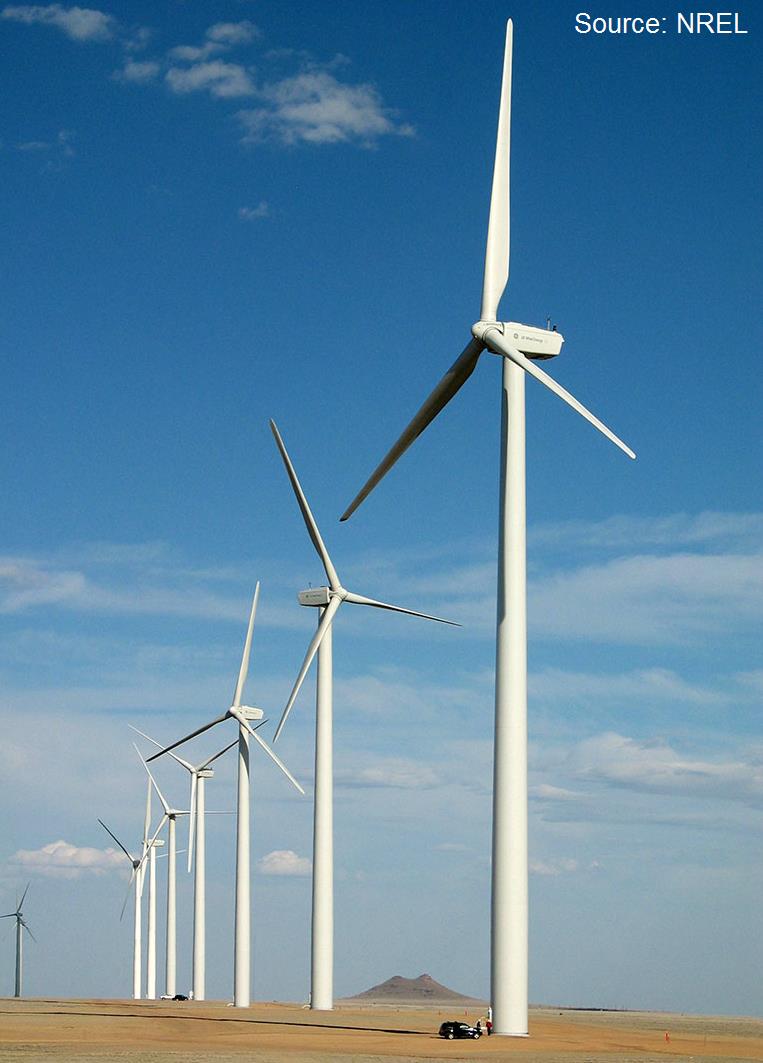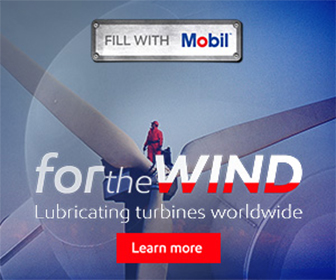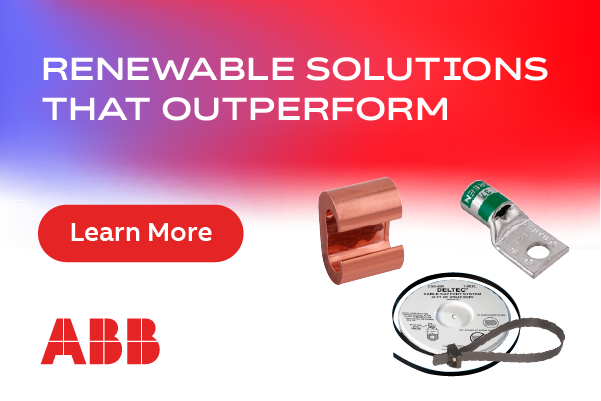Wind Turbine Certification in North America
Wind Turbine Certification in North America
An overview
 Wind turbine certification on an international platform dates back to the late 1980s when the International Electrotechnical Commission (IEC) began developing standards specifically for the design of wind turbines. At that time, wind turbine technology was in its infancy and only a handful of original equipment manufacturers (OEMs) and certification bodies (CBs) existed. The rapid increase in the number of OEMs, concerns about the viability of wind energy and reliability of wind turbines, competition among the OEMs for market placement, project finance and commercialization requirements, and the much-needed reduction in the levelized cost of energy of wind turbines via optimization are several of the critical factors that led to the growth of certification within the wind industry.
Wind turbine certification on an international platform dates back to the late 1980s when the International Electrotechnical Commission (IEC) began developing standards specifically for the design of wind turbines. At that time, wind turbine technology was in its infancy and only a handful of original equipment manufacturers (OEMs) and certification bodies (CBs) existed. The rapid increase in the number of OEMs, concerns about the viability of wind energy and reliability of wind turbines, competition among the OEMs for market placement, project finance and commercialization requirements, and the much-needed reduction in the levelized cost of energy of wind turbines via optimization are several of the critical factors that led to the growth of certification within the wind industry.
There are several options for certifying wind turbines, one of which is the IEC. A certification system is based on a conglomeration of standards where each standard is designed to address the requirements or recommendations for certifying a particular category or aspect of operational systems of a wind turbine. In addition to standards, there are several wind turbine certification guidance documents known as "guidelines".
Differentiating between a standard and a guideline
Standards are developed through a controlled consensus process including input from a cross-section of the stakeholders from the industry. If the document is issued by one entity without formal industry stakeholder input, it is a guideline. When a standard is considered preliminary and unable to attain a consensus level, the document is temporarily categorized as a "technical specification". IEC 61400-13 (mechanical loads measurement) and IEC 61400-23 (rotor blade testing) were technical specifications for several years before qualifying and accepted as standards worldwide. Sometimes stakeholder groups, such as American Wind Energy Association (AWEA), issue a "recommended practice" (RP) as a precursor to a standard. The RP allows the industry to try out the recommendation before making it a mandatory standard.
IECRE, AWEA, and standards development and harmonization
The main certification standards for wind turbine design in the IEC system are IEC 61400-1 (large wind turbines), IEC 61400-2 (small wind turbines), and IEC 61400-3 (offshore wind turbines); the overall umbrella standard is IEC 61400-22, covering the complete scope of certification: prototype, component, type, and project. The IEC system is becoming more organized and transparent so every applicant is evaluated using a similar process defined by "The IEC System for Certification to Standards Relating to Equipment for Use in Renewable Energy Applications" (IECRE System). The system is being developed to harmonize the certification process for stakeholders involved in wind turbine design, manufacturing, testing, and certification. The IECRE is not limited to wind turbine standards, but encompasses the standards development tasks for several other renewable energy sources. IEC is also increasing the number and scope of standards for wind turbine certification; IEC 61400-5 and IEC 61400-6 are upcoming wind turbine blade design and wind turbine tower and foundation design standards, respectively.
AWEA has developed a small wind turbine certification standard and has been working towards adopting IEC standards through the American National Standards Institute (ANSI). Canada, through the Canadian Standards Association (CSA) Technical Committee on wind turbines has adopted several IEC wind turbine standards and published an electrical standard for wind turbines. In addition, AWEA has issued guidelines, specific to wind turbines, with other existing US-based organizations such as the American Society of Civil Engineers (ASCE). The current recommended practices issued by AWEA are AWEA 9.1 Small Wind Standard; ASCE/AWEA RP 2011 for support structures; and the AWEA Offshore Compliance RPs.
AWEA and UL are also heavily co-involved in developing national standards for electrical compliance of wind turbines in the US. UL 6142 and AWEA 6142 (small wind turbine electrical safety standard) were released in 2015. Similarly, UL 6141 (large wind turbine electrical safety standard) recently became an American National Standard.
Minimum requirements for compliance to install and operate a wind turbine in the US
- Mechanical and structural safety certification: Authority Having Jurisdiction (AHJ) require compliance with building codes from ASCE for support structures (including tower and foundation design) in several US states. Some states also require seismic analysis, soil analysis, etc., depending on the site conditions. The wind turbine rotor nacelle assembly is usually kept out of the scope. In these cases, compliance is determined by the AHJs on the basis of analysis reports issued and stamped by a professional engineer. Depending on the design of the wind turbine, the AHJ may require analysis of the entire turbine.
- Electrical safety: AHJs require compliance with published American National Standards such as UL 6142 for small wind turbines.
These requirements vary from one county to another in the US. There is speculation that the main reason for AHJs requiring compliance with American National Standards is a federal law known as the National Technology Transfer and Advancement Act of 1995. The law requires local regulatory agencies to mandate compliance with existing standards developed by committees that include a majority of stakeholders involved with the product category.
A common misconception about wind turbine certification is the CB which writes the standard is the only agency which can certify to that standard. In fact, any CB can certify to a standard as long as it is accredited to that particular standard and scope. OEMs should always verify the accreditation of labs where they test wind turbine components as well as the accreditation of the CB.
Federal government regulations and initiatives
Federal government agencies such as the Occupational Safety and Health Administration (OSHA) and Bureau of Ocean Energy Management (BOEM) have their own requirements commonly titled as code of federal regulations (CFRs). For IEC certification, compliance to OSHA regulations is not required but is highly recommended and several CBs use them as bare minimum requirements. Several ANSI standards also provide similar but detailed guidelines compared to federal government agencies, for example, ANSI/ASSE Z359.1 for fall arrest systems testing and certification. On the financial side, the Internal Revenue Service (IRS) issued the requirement to qualify for investment tax credits for wind turbines rated less than 100 kW; to get the credit, the turbine has to comply with AWEA 9.1 or IEC 61400-1; IEC 61400-12, and IEC 61400-11. This requirement is one of the most direct examples of government initiatives and financial benefits of certifying wind turbines.
The leading wind turbine certification option for US OEMs is the IEC system because IEC is recognized worldwide. The IEC system of standards is becoming more elaborative and robust, and is evolving into a fully developed IECRE system. Standards harmonization efforts are taking place at a faster pace than ever before; and the standards development committees in the US and Canada are actively leading the North American wind industry towards becoming a safer and more reliable source of renewable energy.
 Anant Jain is a project engineer at Intertek in Cortland, NY, and has a PhD in Wind Science and Engineering from the National Wind Institute of Texas Tech University in Lubbock, TX.
Anant Jain is a project engineer at Intertek in Cortland, NY, and has a PhD in Wind Science and Engineering from the National Wind Institute of Texas Tech University in Lubbock, TX.
Intertek | www.intertek.com
Volume: 2016 September/October









